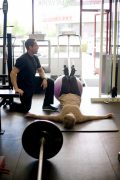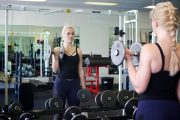A 10-Second Balance Test As a Predictor of Longevity
Think about all the times in your day when you balance on one leg, without thinking much of it: getting in and out of the car, going up and down the stairs, and so on. Interestingly, there seems to be a link between ability to balance and expected longevity. It highlights why improving your balance as part of an overall fitness plan should be a priority for healthy aging. The certified personal trainers at Framework Personal Training in Reno are explaining the connection between balance and longevity, plus what you can do to start improving your balance now.
Balance and Longevity
Around the sixth decade of life, balance begins to diminish quickly. It’s one of the markers of non-aerobic fitness, along with muscle strength and flexibility. These components are key for good health, but balance tests in particular are rarely incorporated into health assessments. A 2022 study published in the British Journal of Sports Medicine assessed the ability of over 1,700 people between the ages of 51 and 75 to stand on one leg for 10 seconds. They were instructed to rest the free leg on the back of the standing leg, arms to the side, and given three chances to complete the task successfully.
Roughly 20% of participants couldn’t maintain their balance in this position for the full 10 seconds. The older the participants, the higher the failure rate:
- Ages 51-55: 5% failure rate
- Ages 56-60: 8% failure rate
- Ages 61-65: 18% failure rate
- Ages 66-70: 37% failure rate
- Ages 71-75: 54% failure rate
Here’s the interesting part. Participants who weren’t able to balance for the full 10 seconds one one leg were more likely to have higher body weights, high cholesterol, type 2 diabetes, or cardiovascular disease—no matter their age. Researchers also adjusted for factors like existing health conditions, age, and gender, and estimated that participants who couldn’t successfully complete the tests were associated with an increased risk of death over the next seven years by a full 84%.
It’s About More Than Falling
You might assume that poor balance is problematic because it means a greater risk of falling. But it’s so much more than that. Poor balance is an indication about overall health, pointing to issues like poor muscle strength and coordination, even medical issues like peripheral neuropathy or illness.
How to Improve Balance
Fortunately, improving balance is achievable, and the best way to get started is by building stability and strength. That comes from physical activity. Senior fitness is something the experts here at Framework Personal Training specialize in. Our team of certified personal trainers works closely with many older adults to improve physical fitness, and improved balance is just one of one the benefits. While it’s never too late to begin strength training as a way of improving your physical and mental health, the biggest hurdle for many older adults is simply knowing how to get started. If you’re in Reno, contact Framework Personal Training today. Our certified trainers are happy to help.








Leave a Reply
Want to join the discussion?Feel free to contribute!